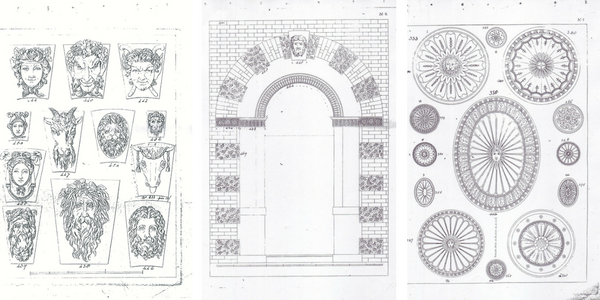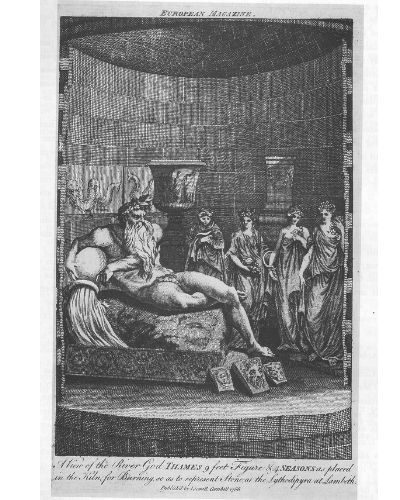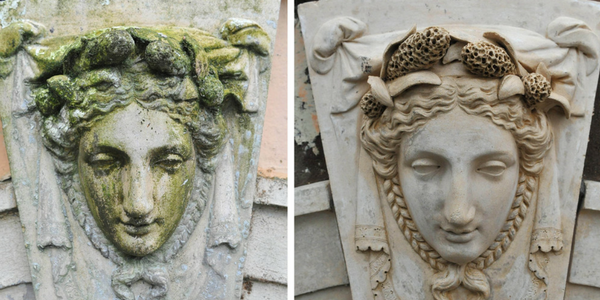It’s a mistake to think that in its replication, Coade stone was mass-produced. It was rather a highly skilled process involving many different stages.
First, a skilled sculptor would create the model figure, carefully sized to be 8-10% bigger than the desired final result (since this was the shrinkage that could be expected in the kiln). A plaster mould was taken of this model, in very closely fitting ‘jigsaw’ pieces if it was a large work.
 Eleanor Coade produced catalogues showcasing Coade stone's potential. Image: Sir John Soane's Museum
Eleanor Coade produced catalogues showcasing Coade stone's potential. Image: Sir John Soane's Museum
Meanwhile, the ingredients for the Coade stone were assembled: a mixture of ball clay, previously fired stoneware, soda glass and flint. The dry constituents were ground to just right fineness for the particular piece, using a grindstone turned by hand. After combining everything in a trough, the raw mixture pressed by hand into the mould pieces – the craftsman’s or -woman’s fingerprints are often still apparent on the inside of Coade pieces. Turned out, the halves were joined together or, for larger works, the pieces were carefully reassembled as necessary, the joints mashed in so that they were no longer apparent. The assembled cast was then allowed to dry in the air until the clay had hardened, larger works propped or braced against collapse. The whole piece was then fired in the kiln.
Statues with protruding limbs etc. were probably propped in the kiln. Some works are found to have hidden cast iron rods tying the pieces together, but an iron rod shrinks differently from the clay, so that such a work could probably not have been fired already pinned.
Coal-fired kilns could be quite large, larger than modern-day electric kilns. There are a couple of contemporary illustrations from the Coade manufactory’s publicity material that show them full of life-size (and larger) figures that may not be an exaggeration.

1784 engraving of the Coade manufactory’s coal-fired kiln (Gentleman’s Magazine)
The kilnsman’s job was a highly skilled one, requiring him to work through the night during firing to keep the temperature constant, and he was paid more than other employees. After firing, the pieces were cooled and then given a final finish, rubbing down any rough joints or edges.
The manufactory didn’t always get it right – sometimes the iron rods corrode and spall the ‘stone’, and very occasionally a batch proved less durable, for all Mrs Coade’s high standards of quality control. But most of the time, Coade stone ruled supreme for durability and appearance. 250 years of frost and rain later, most Coade stone pieces are as crisp as the day they came out of the kiln. When we restored Belmont, we were astonished by the revealed detail of the female keystones’ lace collars, and the dimples on the acorn cups in the cornice frieze.
 Before and after cleaning Coade stone at Belmont in Lyme Regis
Before and after cleaning Coade stone at Belmont in Lyme Regis
Learn more about Eleanor Coade and Belmont
Mrs Eleanor Coade
Where to find Coade stone
Visit Belmont